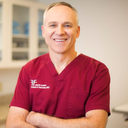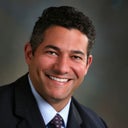I have lower facial sagging, jowls and nasal labial folds that I would like to eliminate. I believe all are due to aging and my pregnancy in 2006 when I gained weight mainly in my face and stomach. I am 44 years old, thin, athletic. A surgeon has recommended a mid-face lift, anterior neck lift with liposuction and lipo of the “fat pads” on my cheek bones. Are these procedures the best way/current standard to smooth my face and jawline?
Answers (27)
From board-certified doctors and trusted medical professionals
Dr. Jed H. Horowitz, MD, FACS

Dr. Jed H. Horowitz, MD, FACS
Board Certified Plastic Surgeon
Answer
Dr. Stefan Mark Szczerba, MD

Dr. Stefan Mark Szczerba, MD
Board Certified Plastic Surgeon
Answer
Dr. Houtan Chaboki, MD

Dr. Houtan Chaboki, MD
Board Certified Facial Plastic Surgeon
Answer
Dr. Richard G. Schwartz, MD

Dr. Richard G. Schwartz, MD
Board Certified Plastic Surgeon
Answer
Dr. Frank P. Fechner, MD

Dr. Frank P. Fechner, MD
Board Certified Facial Plastic Surgeon
Answer
Dr. Thomas Buonassisi, MD

Dr. Thomas Buonassisi, MD
Board Certified Facial Plastic Surgeon
Answer
Dr. Vincent N. Zubowicz, MD

Dr. Vincent N. Zubowicz, MD
Board Certified Plastic Surgeon
Answer
Dr. Ronald J. Edelson, MD

Dr. Ronald J. Edelson, MD
Board Certified Plastic Surgeon
Answer
Dr. Jeffrey M. Darrow, MD

Dr. Jeffrey M. Darrow, MD
Board Certified Plastic Surgeon
Answer
Dr. Jeffrey E. Schreiber, MD, FACS

Dr. Jeffrey E. Schreiber, MD, FACS
Board Certified Plastic Surgeon
Answer
More Facelift Questions
See all Facelift Q&AWE SEND PRETTY
EMAILS
What’s trending? Who’s turning heads? Which TikTok myths need busting? We’ve got you. No fluff, no gatekeeping—just real talk. Get our free, unfiltered newsletter.